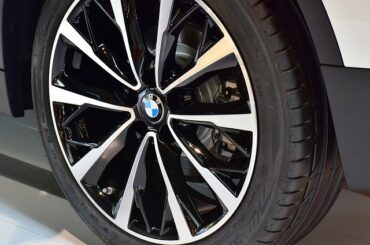In the vibrant world of automotive enthusiasts, the term “Ricer Car” has emerged as a subject of intrigue and debate. Often used with varying degrees of humor and criticism, it refers to a particular type of heavily modified automobile. To understand what is a Ricer Car, it is essential to delve into the origins and evolution of the term. In this article, we will explore the definition of a Ricer Car and uncover the intriguing story behind its inception, shedding light on its transformation from a niche expression to a widely recognized term in car enthusiast circles.
Contents
- 1 The Car Enthusiast Community and Automotive Customization
- 2 The Birth of the “Ricer Car” Phenomenon
- 3 Key Characteristics of a Ricer Car
- 4 The Impact of the Ricer Car Trend
- 5 Breaking the Stereotypes: Legitimate Car Customization
- 6 Evolving Tastes and Preferences in the Car Enthusiast Community
- 7 What is a ricer car?
The Car Enthusiast Community and Automotive Customization
The car enthusiast community forms a vibrant and diverse group of individuals with an unwavering passion for automobiles. Beyond mere means of transportation, cars hold a special place in their hearts, fueling a deep fascination for automotive culture and customization.
At the heart of the car enthusiast culture lies a genuine love for all things automotive. From classic models to the latest high-performance vehicles, enthusiasts revel in the engineering marvels, historical significance, and unique designs that make each car a work of art.

Automotive customization serves as a fundamental expression of this passion. Enthusiasts eagerly seek ways to personalize and enhance their vehicles, transforming them into extensions of their personalities. Customization allows car owners to create something unique that reflects their tastes and preferences.
There are various forms of automotive customization, ranging from performance-oriented modifications to purely aesthetic enhancements. Performance customization involves tweaking the vehicle’s engine, exhaust, suspension, and other mechanical components to enhance its speed, handling, and overall performance on the road or track.
On the other hand, aesthetic customization focuses on the car’s appearance. Enthusiasts may add eye-catching paint jobs, decals, graphics, body kits, and aftermarket accessories to give their vehicles a distinct, head-turning look. Interior customization is also popular, with enthusiasts upgrading seats, upholstery, and infotainment systems to create a more comfortable and personalized driving experience.
Beyond the tangible modifications, automotive customization fosters a sense of community and camaraderie among car enthusiasts. The car meets, shows, and online forums provide platforms for enthusiasts to showcase their prized possessions, exchange ideas, and appreciate each other’s creativity and craftsmanship.
The Birth of the “Ricer Car” Phenomenon
The Rise of Japanese Import Cars in Car Enthusiast Circles:
In the late 20th century, Japanese imported cars were popular among enthusiasts worldwide. Brands like Honda, Toyota, Nissan, and Mitsubishi started producing affordable and reliable vehicles that caught the attention of young automotive enthusiasts seeking performance and customization potential.
These Japanese import cars, often called “imports,” became blank canvases for automotive enthusiasts to express their creativity through modifications. The aftermarket industry responded with a plethora of performance parts and accessories, making it easier than ever for owners to enhance the appearance and performance of their vehicles.
How the Term “Ricer” Originated and Its Stereotypical Associations:
The term “Ricer” emerged in the 1990s and early 2000s, originating from the word “rice,” which stood for “Race Inspired Cosmetic Enhancements” or “Race Inspired Cosmetic Engineering.” Initially, the term was intended to describe Japanese import cars that received extensive cosmetic modifications, particularly those that imitated the appearance of high-performance race cars.
However, over time, the term took on a more derogatory connotation. It began to be associated with vehicles with excessive and ostentatious aesthetic modifications that lacked substantial performance enhancements. These modifications often included large wings, elaborate body kits, flashy decals, and neon lighting, which some saw as purely for show rather than improving the car’s performance.
The stereotypical associations with Ricer Cars encompassed a perception of owners seeking attention or trying to make their vehicles look fast without the corresponding performance upgrades. Consequently, the term became a pejorative label, evoking criticism and ridicule within the car enthusiast community.
It’s essential to note that the term “Ricer” has been controversial and divisive. While some consider it light-hearted banter, others find it offensive and argue that it perpetuates stereotypes and judgment within the car enthusiast community. As car modification is a highly personal choice, individual tastes and preferences should be respected, regardless of the modifications made to their vehicles.
Key Characteristics of a Ricer Car
1. Excessive and Ostentatious Modifications:
One of the defining features of a Ricer Car is the presence of excessive and over-the-top modifications. Owners tend to go to great lengths to make their vehicles stand out from the crowd, often piling on numerous aftermarket parts and accessories. This can include large and flashy body kits, exaggerated wings, and many decals and stickers.
2. Emphasis on Aesthetics Over Performance:
Ricer Cars are often criticized for focusing on aesthetics rather than performance improvements. While some car enthusiasts prioritize enhancing their vehicle’s speed, handling, and overall driving capabilities, Ricer Car owners may prioritize appearance alone. The modifications are intended to give the impression of a high-performance vehicle without necessarily delivering significant boosts in actual performance.
3. Common Modifications Associated with Ricer Cars:
Certain modifications have become synonymous with Ricer Cars due to their widespread use in this automotive subculture. Some of these common modifications include:
– Enlarged Wings: Often mounted on the rear of the vehicle, large wings may serve a functional purpose in high-performance racing cars, but on Ricer Cars, they are primarily for aesthetic appeal.
– Elaborate Body Kits: Ricer Cars frequently feature body kits with aggressive designs and additional aerodynamic elements, despite the vehicle not being intended for racing purposes.
– Oversized Wheels and Tires: Ricer Cars may have oversized wheels with low-profile tires, prioritizing style over practicality and ride comfort.
– Neon Lighting: Interior and exterior neon lighting are popular additions to Ricer Cars, especially in vibrant colors, further accentuating their eye-catching appearance.
– Excessive Decals and Stickers: Ricer Car owners often plaster their vehicles with decals and stickers, displaying brand names, racing logos, or graphics that may not align with the vehicle’s performance capabilities.
The Impact of the Ricer Car Trend
Criticism and Controversy Within the Car Enthusiast Community:

The Ricer Car trend has sparked significant criticism and controversy among enthusiasts. Traditional car enthusiasts prioritize performance and mechanical improvements and often express frustration with Ricer Cars’ focus on superficial modifications. They argue that excessive aesthetic enhancements do not contribute to the vehicle’s actual performance and may even degrade its driving capabilities.
Furthermore, some car enthusiasts believe that Ricer Cars can perpetuate negative stereotypes about car customization. The association of Ricer Cars with impractical and showy modifications has led to a perception that all car enthusiasts engage in superficial and non-functional enhancements, which is far from the truth.
The Diverse Opinions on Ricer Cars: From Amusement to Derision:
Opinions about Ricer Cars within the car enthusiast community vary widely. Some view them with a sense of amusement, recognizing them as an expression of personal taste and creativity. They appreciate owners’ efforts in making their vehicles unique, even if the modifications may not align with traditional performance-oriented preferences.
Conversely, many car enthusiasts view Ricer Cars with derision. They consider these vehicles as representing a lack of understanding or appreciation for the true essence of automotive customization, which, to them, involves enhancing the performance and functionality of the vehicle.
It is essential to note that while criticism exists, many car enthusiasts strive to maintain a respectful and inclusive community. They acknowledge that car customization is a deeply personal endeavor, and what one person considers a Ricer Car might be another’s representation of artistic expression and individuality.
Breaking the Stereotypes: Legitimate Car Customization
Understanding the Personalization and Expression in Car Modification:
Legitimate car customization is about embracing the art of personalization and expression within the automotive community. Car enthusiasts, driven by their passion and individual tastes, seek to create unique vehicles that reflect their personalities and preferences. This modification goes beyond superficial enhancements and focuses on improving the driving experience, enhancing performance, and adding genuine value to the vehicle.
Car customization allows enthusiasts to explore their creativity, turning their cars into personalized art. Every modification, from custom paint jobs to carefully selected aftermarket parts, expresses the owner’s vision for their vehicle.
Differentiating Between Ricer Cars and Purposeful Modifications:
While Ricer Cars have often faced criticism for their excessive and ostentatious modifications, it is essential to differentiate between these vehicles and purposeful modifications. Legitimate car customization concentrates on improving performance, functionality, and safety, along with aesthetic enhancements.
Purposeful modifications may include:
1. Performance Upgrades: Enthusiasts may upgrade the engine, exhaust system, suspension, and brakes to boost the vehicle’s speed, handling, and overall driving capabilities.
2. Tuning and Engine Management: Fine-tuning and optimizing the engine’s performance through careful calibration and modifications.
3. Safety Enhancements: Adding safety features like roll cages, reinforced frames, and better braking systems to improve on-road safety.
4. Functional Aerodynamics: Employing aerodynamic modifications that are not merely for show but genuinely improve the vehicle’s stability and efficiency at high speeds.
5. Quality Aftermarket Parts: Using reputable aftermarket parts tested and proven to provide real performance benefits.
By focusing on these purposeful modifications, car enthusiasts can break away from the stereotypes associated with Ricer Cars. The emphasis is on enhancing the vehicle’s capabilities and achieving a harmonious balance between aesthetics and performance.
Evolving Tastes and Preferences in the Car Enthusiast Community
The Shifting Trends in Automotive Customization:
In recent years, the car enthusiast community has witnessed shifting trends in automotive customization. While Ricer Cars once dominated the scene with their flashy aesthetics, there has been a noticeable evolution towards a more balanced and purpose-driven approach to car modification.
Performance Matters: Enthusiasts are increasingly prioritizing performance upgrades over purely cosmetic enhancements. The desire to improve a vehicle’s speed, handling, and overall driving experience has become a central focus in the customization process.
Embracing Eco-Friendly Solutions: With growing awareness of environmental concerns, more car enthusiasts are exploring eco-friendly modifications. This includes adopting electric vehicles (EVs) and hybrid models and performance-oriented modifications that maximize efficiency while reducing carbon footprints.
Integration of Technology: Technology has played a significant role in shaping modern automotive customization. Enthusiasts are embracing advancements in connectivity, infotainment, and driver assistance systems, enhancing the driving experience and vehicle safety.
Classic Cars and Restorations: In addition to modifying newer models, there is a resurgence of interest in classic car restoration. Car enthusiasts preserve automotive history by reviving vintage vehicles and keeping them on the roads.
Embracing Diversity and Respecting Different Car Customization Styles:
As automotive customization trends diversify, the car enthusiast community is becoming more inclusive and accepting of different car customization styles. Enthusiasts recognize that there is no one-size-fits-all approach to car modification and that personal taste plays a significant role in shaping each vehicle’s unique identity.
Respecting Individual Expression: Embracing diversity means acknowledging that car customization is a personal expression. Enthusiasts respect each other’s choices, even if they may differ from their preferences, recognizing that there is beauty in the individuality of each customized vehicle.
Fostering a Supportive Community: Car meets, forums, and social media groups have become platforms for enthusiasts to share their passion and knowledge. These spaces facilitate discussions about various car customization styles and encourage mutual support and camaraderie among enthusiasts.
Appreciating Artistry: Car enthusiasts increasingly recognize the artistry involved in automotive customization. They appreciate the craftsmanship and creativity that enthusiasts pour into their vehicles, regardless of the chosen style.
What is a ricer car?
The allure of car customization remains as strong as ever within the car enthusiast community. Enthusiasts, driven by their passion for automobiles, continue to embrace the art of personalization and expression through their vehicles. The evolution of automotive customization trends, with a growing focus on performance, eco-consciousness, and technological integration, reflects the ever-changing landscape of the automotive world.

Amidst this evolution, it is crucial to acknowledge the controversy surrounding Ricer Cars. While the term has sparked criticism and stereotypes, it is essential to approach the subject with an open mind and recognize that car customization is a deeply personal endeavor. The diverse opinions within the car enthusiast community should be acknowledged, but not at the expense of undermining the individuality and creativity that defines automotive customization.
Emphasizing personal choice and respect is paramount in maintaining a harmonious car enthusiast community. Enthusiasts should embrace the diversity of car customization styles, from classic restorations to cutting-edge performance enhancements, without judgment or ridicule. Supporting one another’s passion for cars and appreciating the artistry and craftsmanship in each customization project fosters a positive and inclusive environment for all car enthusiasts.
As the automotive world evolves, so will car customization trends and preferences. The journey of personalizing and modifying vehicles will remain an enduring aspect of the car enthusiast culture as enthusiasts continue to push the boundaries of creativity and innovation. Through understanding, acceptance, and respect, the car enthusiast community can thrive and continue celebrating the love for automobiles that unites them.
NPC Car Revolution: Elevating Immersive Gaming in 2023
Do Employees Get a Discount on Cars? Unlocking Perks in 2023
What Are the Three Types of Towing? A Comprehensive Guide in 2023






